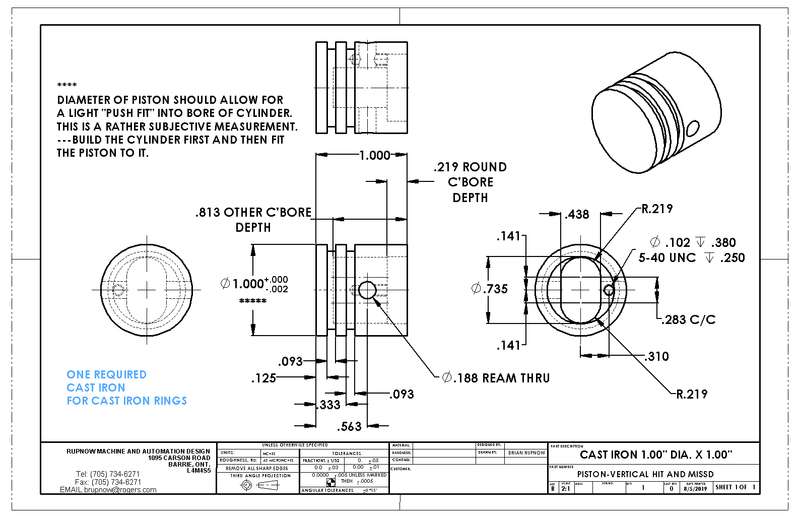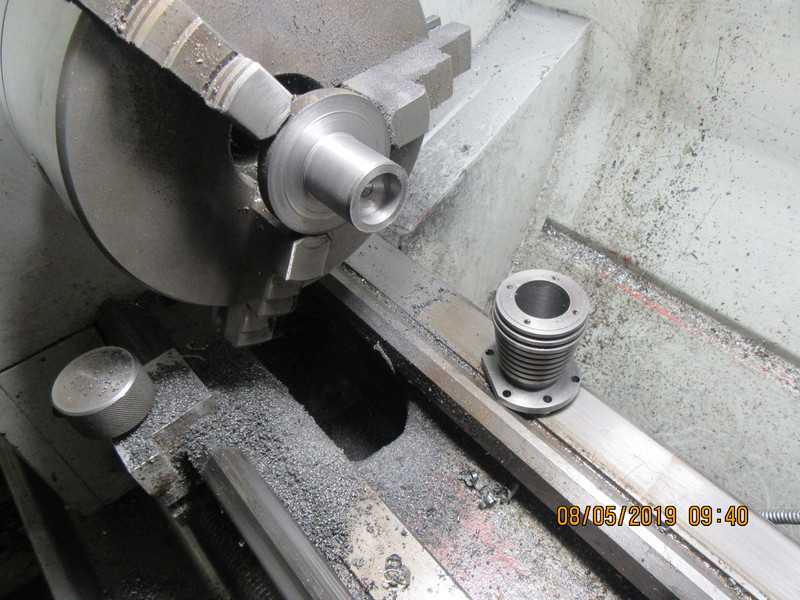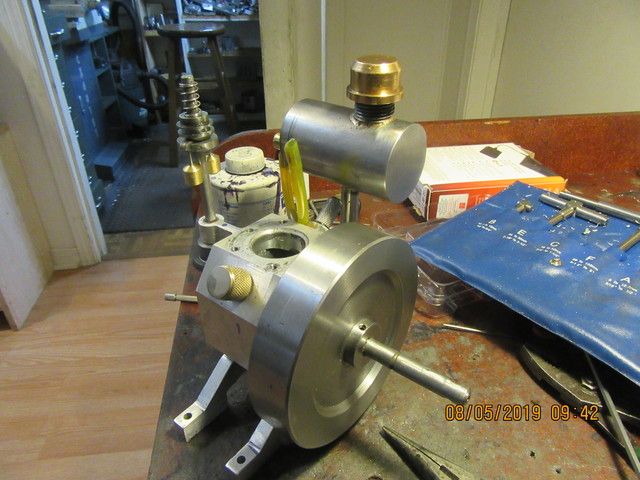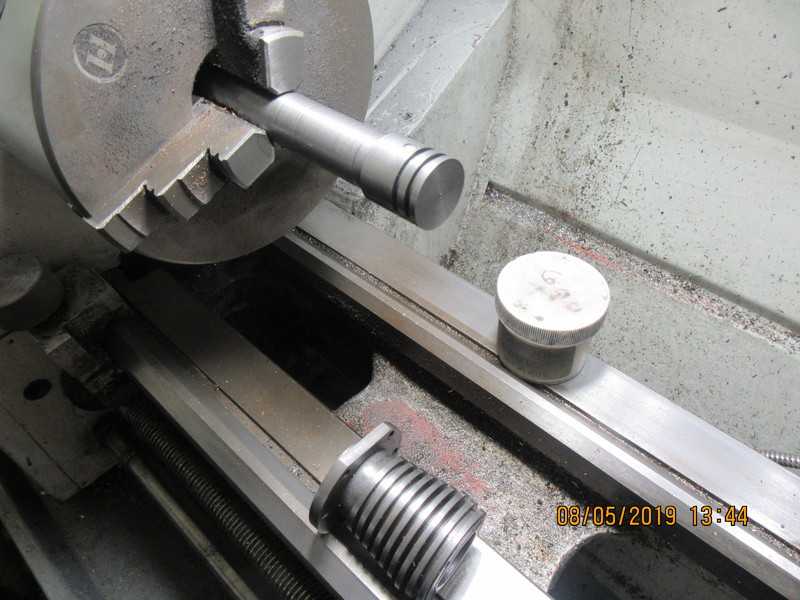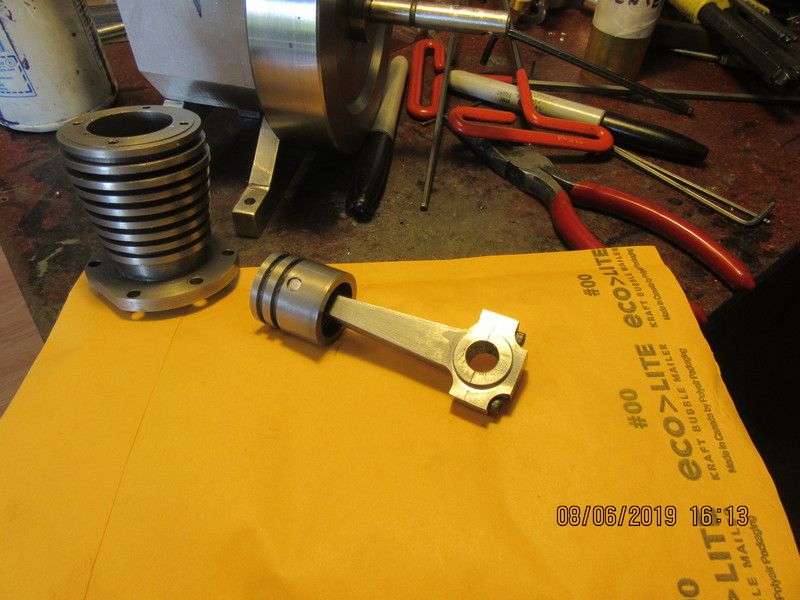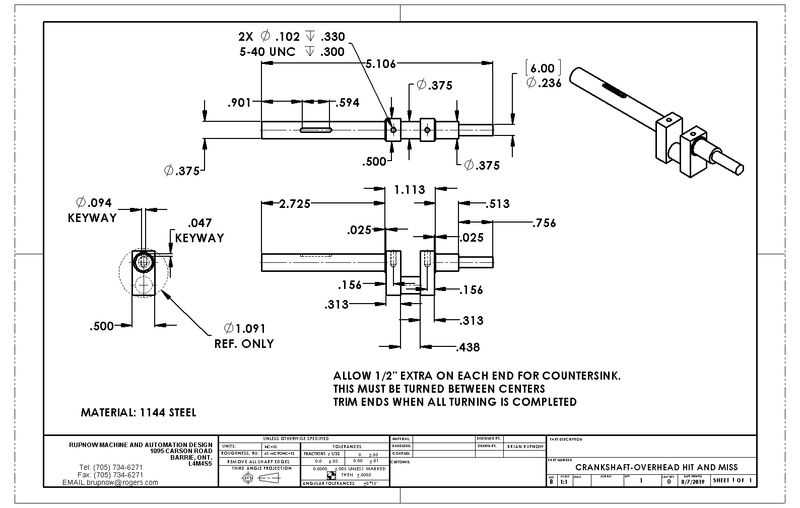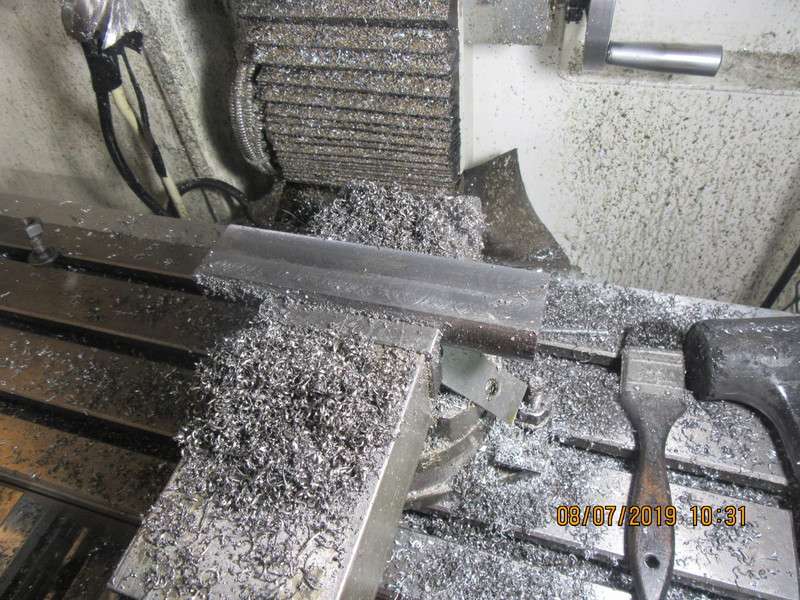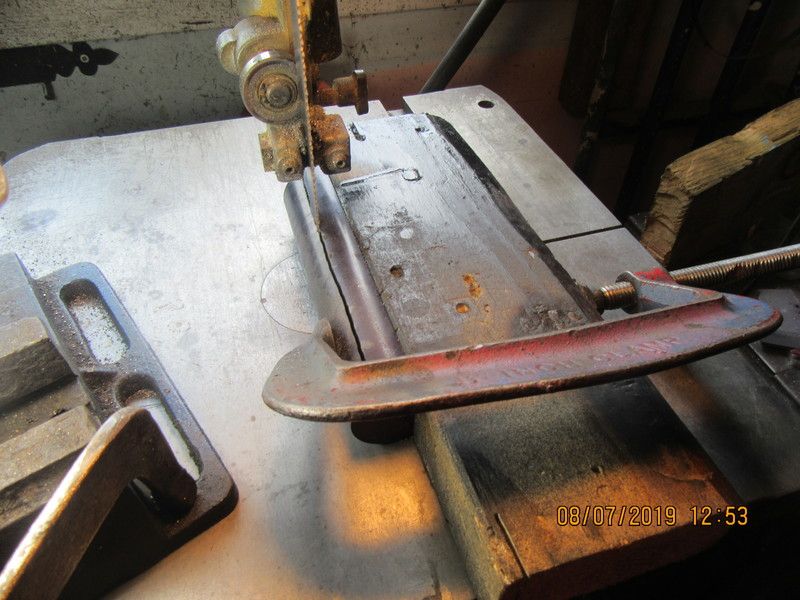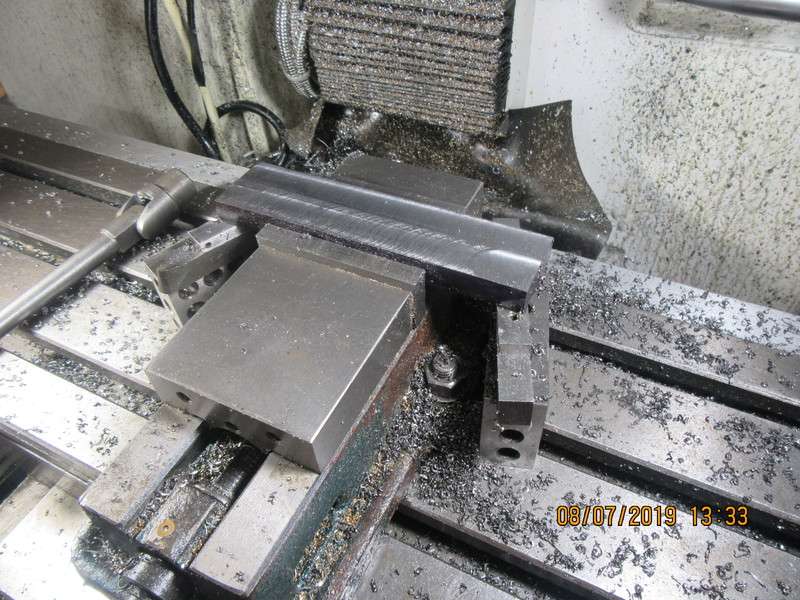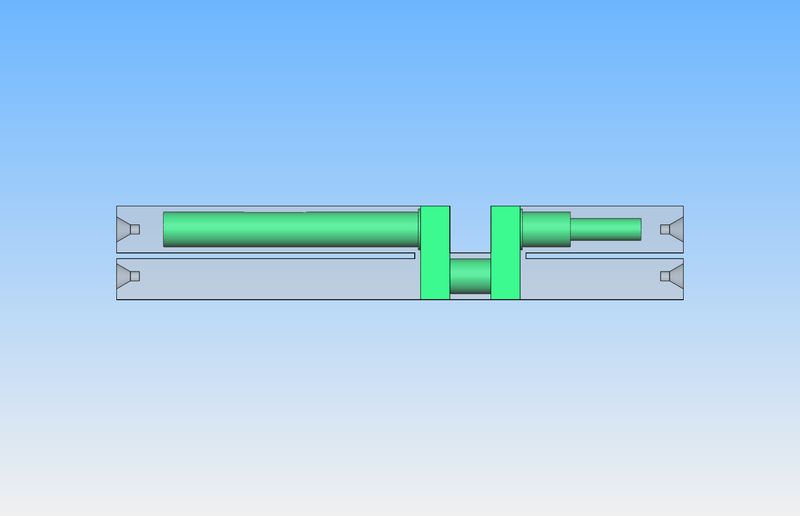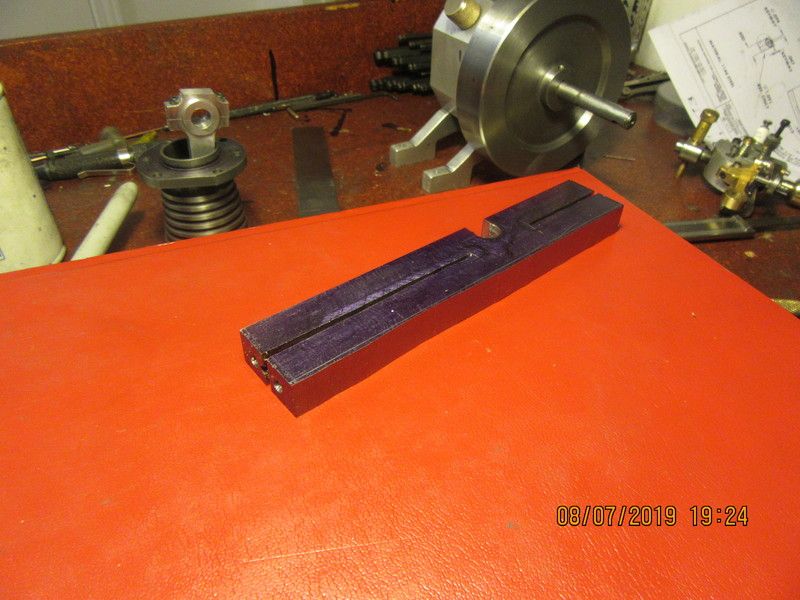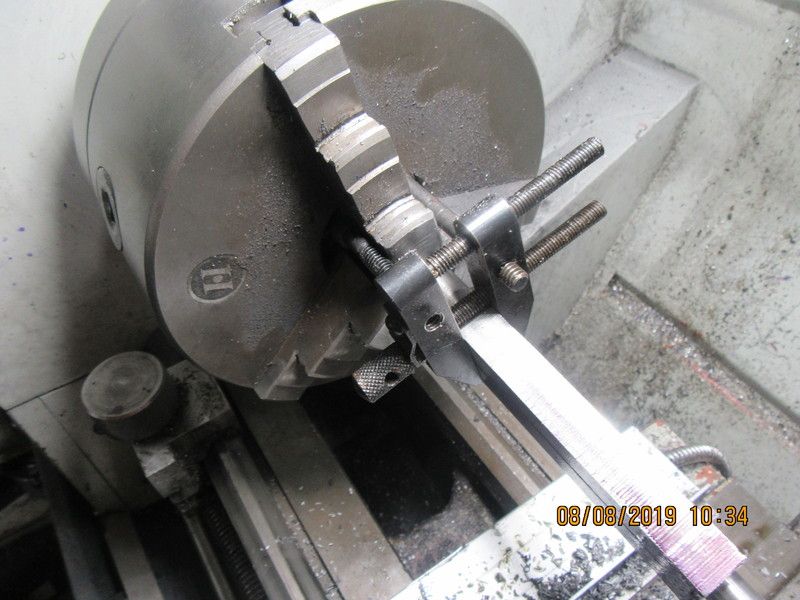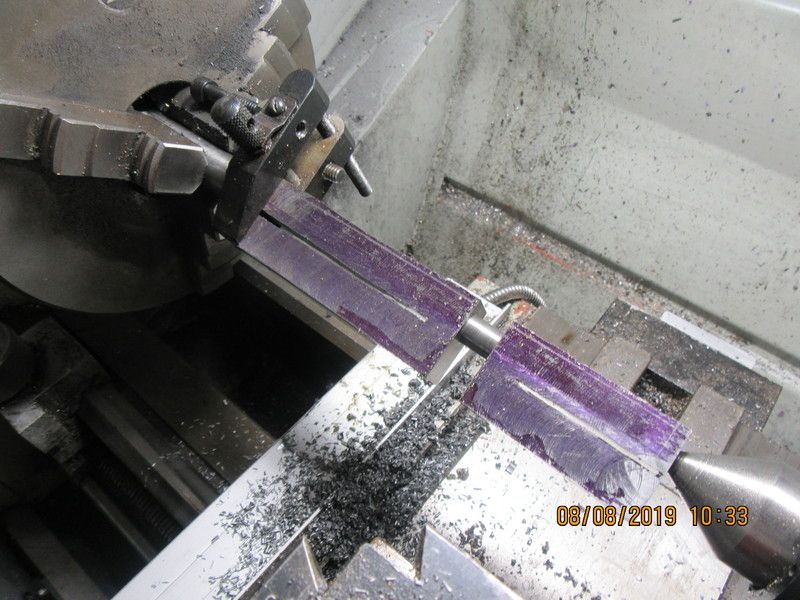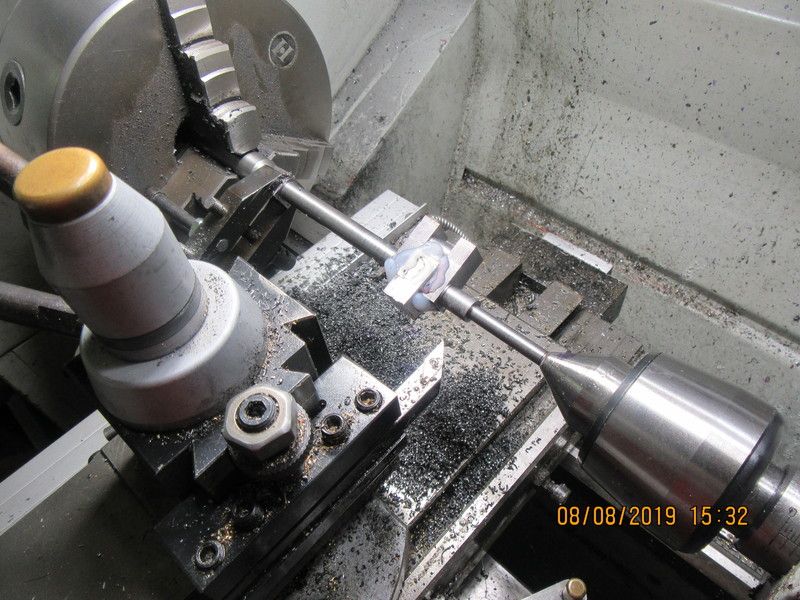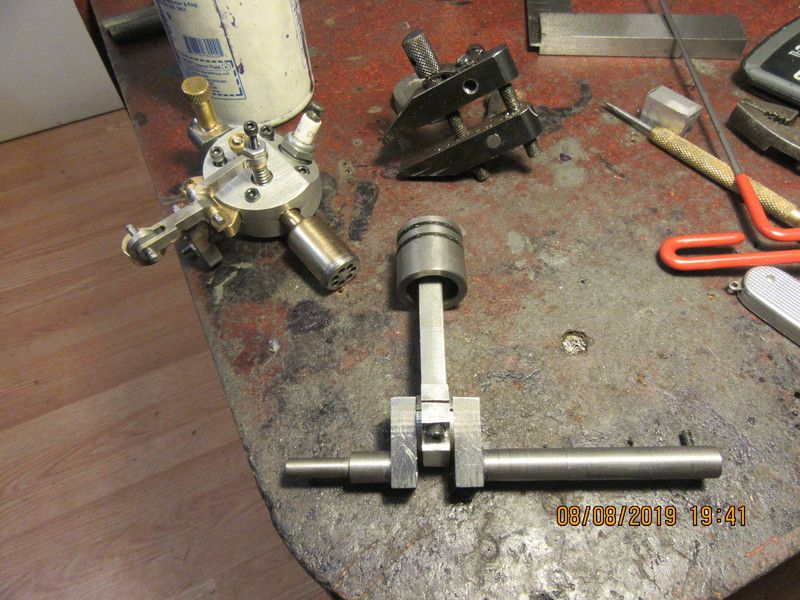Today I deposited some mig weld on the short end of the lockout lever and filed it to shape. It now will swing under the rocker arm when it is "up" on the cam lobe, but not under it when it is "down" on the cam lobe. This is exactly what I wanted to achieve, so will be moving on to the piston tomorrow. I have been in a terrible fight with my computer all day. I bought an external hard drive to back everything up on my computer and plan on keeping it in my safety deposit box at the bank. Somehow this has affected my email, and it isn't working right. I've had two trips up to the computer shop today--no joy. I guess that I will call in "Geeks on wheels" this week and have them figure out what the heck is going on. And--Good news--You have no doubt heard me talking about my "Fat man's walk". After getting a too high blood sugar count in mid May, I decided to lose 50 pounds. My target is to lose it by sometime in November. Sixteenth of August is the half way mark in time between mid May and the end of November, and I have lost 25 pounds as of today.
Last edited:





